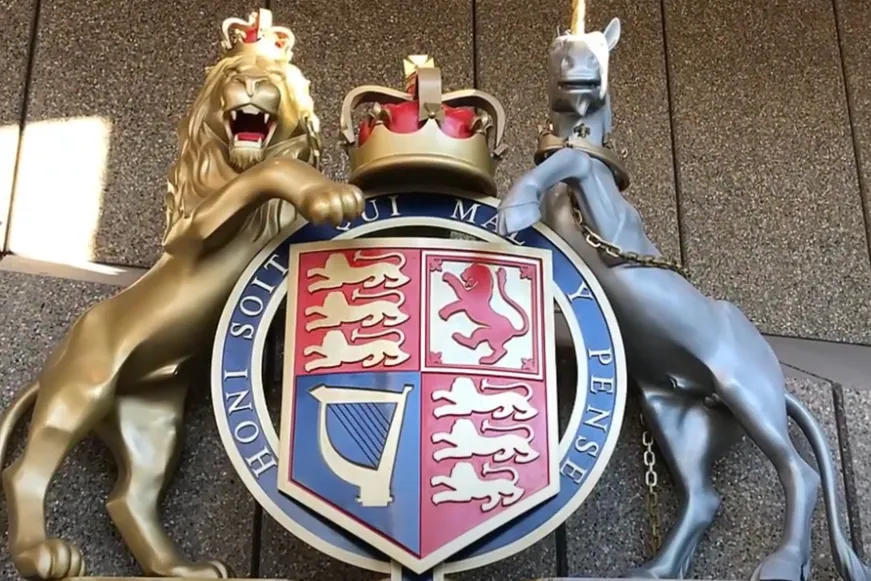Little Known Facts about the South During the War of 1861
by Jim Jester
Soldiers of all nationalities and ancestry served in the Confederate Army (Most notable: Native Americans, Africans, and Mexicans). Blacks were not actively recruited until near the end of the war but were used in support roles. They were not necessarily segregated in the Confederate Army as they were in the Northern Army. The last Confederate general to surrender (two months after Appomattox), was Stand Watie, Cherokee commander of the Indian regiments in the West. Alexis de Tocqueville, a Frenchman who visited the U.S., observed that racism was far more prevalent in free states than in slave states.
Lincoln believed in an American apartheid and had a colonization plan. Under pressure from radical abolitionists, the District of Columbia Emancipation Act, 16 April 1862, finally ended slavery in Washington, D.C. In it, the president included a colonization clause calling for the immediate deportation of all Negroes out of the city upon their liberation. Educated blacks were understandably furious. Black teacher and former servant Booker T. Washington summed up the feelings of most African-Americans toward Lincoln’s colonization plan this way: “I was born in the South. I have lived and labored in the South. I wish to be buried in the South.”
Presidents Lincoln and Davis knew that slavery was about to fade away naturally. This proves that the war was not over slavery alone. Lincoln said, “The whole country looked forward to the ultimate extinction of the institution.” And Davis, in a letter to his wife in 1861, “In any case, our slave property will eventually be lost.” Many Northern historians considered Davis a fanatical racist, but he was no more racist than any other American was in the 19th century. While Lincoln was blocking emancipation, black enlistment, black civil rights, and working on his colonization plan to deport all blacks out of the U.S., Davis was busy trying to figure out a way to end Southern slavery, enlist blacks, initiate black civil rights, and incorporate blacks into mainstream society. During the war, the Davis family adopted a black boy and raised him as their own. Davis also appointed a black man as the Confederacy’s first marshal. Lincoln never appointed a black man to any position, and he would have never adopted a black child.
There were many Southern sympathizers in the Border States. Maryland’s Pro-Southern Democrats living in Washington were especially worried, feeling surrounded by Confederate Virginia and those sympathetic with the Secession movement. But Lincoln’s imposition of martial law, suspension of civil liberties, and the arrest of suspected secessionist sympathizers – including Baltimore’s mayor and police chief, thirty-one state legislators (he did not want Maryland’s election to sway it to the South), and the grandson of Francis Scott Key – eased most of the trepidation. The Supreme Court protested that the president had no right to suspend the writ of habeas corpus. Since Lincoln had the army on his side and the Court did not, he won the argument. Lincoln shut down hundreds of newspapers that disagreed with him and jailed over 13,000 (some say at least 15,000) political dissidents — a fact not usually found in history books.
More blacks fought for the Confederacy than for the Union. In June 1861, one year and three months before the Union officially recruited blacks (March 1863), the Tennessee legislature passed a statute allowing the governor to receive into military service “all male free persons of color, between the ages of 15 and 50....” On 4 February 1862, Virginia also passed a bill to enroll all of the state’s free Negroes into the army. Earlier, on 23 November 1861, a regiment of 1,400 free black volunteers marched through the streets of New Orleans.
The Confederate draft of 13 March 1865 allowed for the official enlistment of blacks, and after 23 March, Southern slaves who enlisted were immediately emancipated and fought as free men alongside white soldiers. Of the 3 million Union soldiers about 200,000 were black, 6 percent of the total. Of the 1 million Confederate soldiers about 300,000 were black, 30 percent of the total – 24 percent more blacks for the South than for the North. This is a conservative estimation (Southern courthouses were burned, so exact numbers are not known) and some historians believe the number of blacks in the Confederacy was closer to 1 million, which would mean that half of the South’s soldiers were black, and that 80 percent more blacks fought for the Confederacy than for the Union. The North’s draft began just three months after the Emancipation Proclamation was signed and blacks were actively recruited. There were some black combat regiments, but most blacks were segregated and assigned menial tasks with long hours.
The death rate of Southern prisoners of war in Northern camps was much higher than Northern prisoners in Southern camps. Lincoln refused to allow food or medicine to be shipped to the South, even if it was for Union prisoners. Jefferson Davis offered to pay two or three times the market price in commodities or gold, for medicine to be dispensed by Northern surgeons for Northern prisoners. Lincoln ignored this offer. Finally, the Confederates offered to release 13,000 of the worst cases without an equivalent exchange by the Lincoln regime. Lincoln waited from August to October to collect the prisoners. After they were released, atrocity photographs of the men were circulated in the North to show how the typical prisoner in Confederate hands was supposedly treated.
Lincoln did nothing to help freed men and women to join mainstream society. Under his Emancipation Proclamation there was no plan to help incorporate former slaves into free citizenship: nothing for the elderly, the ill, or orphaned blacks who could not work and who had previously been under the lifelong care of their owners; no education, no loans or grants, no job training, no housing, to ease them into the world of capitalism, competition, and a free, highly skilled, and often hostile labor force. All were merely “liberated” to roam the streets and make their way as best they could; or as Lincoln flippantly put it, to “root, pig, or perish.” However, Lincoln did offer the black males a job. He enlisted as many as he could into the Union army.
Very few slaves made use of the Underground Railroad. Although the Railroad functioned throughout most of the war, only about 4,000 (just 1,000 per year) out of the 3.5 million servants made use of it (a mere .11%). The rest stayed at home, defending their owners and their farms against the invaders. In an effort to help raise money for the war effort, many slaves and freemen bought Confederate bonds. Others held bake sales and auctions, while others donated clothing and other goods to help support Confederate soldiers. Tens of thousands served as road and bridge builders, cooks, nurses, carpenters, smithies, couriers, and lookouts.
Lincoln refused to hear peace overtures the South made during the war. On 3 February 1865 (the one and only time he agreed to meet), Vice President Alexander H. Stephens and two other commissioners met with Lincoln and Seward to discuss peace terms. Lincoln reminded them from the start that he had placed Union first; and there could be no basis of peace, except a restored Union of all the states. Thus, the conference was entirely abortive.
Lincoln repeatedly violated the constitution. In his landmark book The Real Lincoln, Loyola College economics professor and Lincoln scholar Thomas DiLorenzo recounted how Lincoln also unlawfully “nationalized the railroads; created three new states without the consent of the citizens of those states in order to artificially inflate the Republican Party’s electoral vote; ordered Federal troops to interfere with Northern elections to assure Republican Party victories; deported Ohio Congressman Clement L. Vallandigham for opposing his domestic policies (especially protectionist tariffs and income taxation) on the floor of the House of Representatives; confiscated private property, including firearms, in violation of the Second Amendment; and effectively gutted the Tenth and Ninth Amendments as well.”)
Lincoln ordered the only mass hanging in American history. Thirty-nine leaders of the Sioux were put to death for revolting against the government’s broken promises and stealing of Indian lands. No one was going to get in the way of the expanding American empire. This was the real reason for the War of 1861 – money and empire building. No expense was spared for bridges, railroads, or construction (slave labor) on the capitol building during Lincoln’s War.
After the war, the North posted soldiers at military cemeteries to prevent Southern women from putting flowers on the graves of their deceased husbands, fathers, sons and brothers. This was the beginning of Decoration Day in the South, which eventually became Memorial Day.












